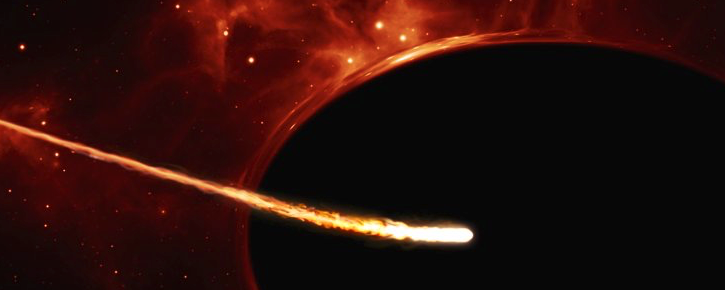
Close-up of star near a supermassive black hole (artist’s impression). Credit: ESO
In June 2016 astronomers detected what was thought to be the brightest supernova ever observed. Later this year, new observations of the source, complicated things as an ultraviolet rebrightening took place two months after the peak brightness, a phenomenon that has never been observed for a supernova. Now, new observations, using the Very Large Telescope (VLT) and the Hubble Space Telescope (HST) among other telescopes, try to shed light on the nature of this source.
Although the supernova scenario cannot be ruled out, a team of astrophysicists analysed the new data, and proposed a new explanation for the nature of this extraordinarily event that took place in a red, massive galaxy four billion light-years from Earth. According to their hypothesis the event was probably caused by a rapidly spinning supermassive black hole that destroyed a low-mass star that was wandering too close. The enormous gravitational force of the black hole, forced mass from the star to start falling onto the accretion disc of the black hole causing a burst of light (tidal disruption event). Based on the team’s calculations the black hole that lies at the centre of its host galaxy has a mass of at least 100 million times that of the Sun.
As, Dr. Leloudas, the first author of the relevant publication states, “Even with all the collected data we cannot say with 100% certainty that the ASASSN-15lh event was a tidal disruption event, but it is by far the most likely explanation.”
Previous related articles: The Brightest Supernova, The most luminous supernova revised
Publication: Leloudas et al. 2016
Source: ESO
